From Passage to Chronicle, recent short films from Latin America
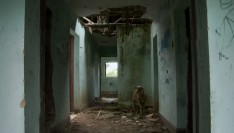
Echo Chamber, by Guillermo Moncayo
Los Angeles Filmforum presents
From Passage to Chronicle, recent short films from Latin America
At the Spielberg Theatre at the Egyptian, 6712 Hollywood Blvd, Los Angeles, CA 90028
Curator Federico Windhausen in person. US premieres!
Note the early start time!
In this program of recent shorts from Latin America, the rural landscape is shown to be the terrain where it becomes possible to see and sense most vividly the local effects of larger political and economic decisions. The presence of dozens of U.S. military and naval installations on the island of Puerto Rico in the past century; the loss of Colombia’s railway infrastructure; the ongoing conflicts between the landless sector and large-scale agribusiness in the Paraguayan countryside – these are a few of the consequential events with special relevance for this collection of videos. Yet these are not examples of traditional reportage or literal documentation. Threaded through the program are invocations of the fantastical, the supernatural, and the talismanic. In many of the sites represented herein, the rural locale is the space of action, of staged and choreographed performances, often carrying out secular and spiritual rituals and using movement to imply or generate narratives.
A version of this program was first presented in May 2016 as part of El Pueblo: Searching for Contemporary Latin America, the Theme section of the International Short Film Festival Oberhausen.
Tickets: $10 general; $6 for students/seniors; free for Filmforum members. Available in advance from Brown Paper Tickets at http://passagetochronicle.bpt.me or at the door.
Windhausen will be presenting another, different, program of works from Latin America at the Echo Park Film Center on Saturday Feb 28 at 8pm:
Theater of Conflict: The New Cinema of Protest in Latin America
https://www.facebook.com/events/184372305364046/

Grabado sobre maguey, by Luna Marán
Grabado sobre maguey
By Luna Marán, Mexico, 1:30 min.
Agave plants transformed by hand-scratched texts. The lyrics of a popular ranchera heard in Ayuuk. A minimal meditation on “living history,” according to Marán. Shot in Oaxaca's Sierra Norte, on Zempoaltépetl, a sacred mountain for the Ayuuk people.
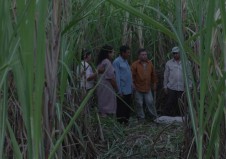
La estancia, by Federico Adorno
La estancia
By Federico Adorno, Paraguay, 2014, 13 min.
Produced after the Curuguaty Massacre, a violent confrontation between police and rural residents occupying lands claimed by a local business group, this film responds not only to that incident but also to what Adorno sees as a “history of the Paraguayan peasant that has been repeating itself for some time now.”
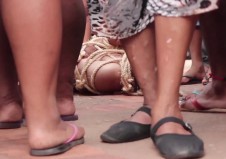
Ficções, by Naldo Martins
Ficções
By Naldo Martins, Brazil, 2013, 3 min.
A foreign body which transgressed a space...which broke with the look of those who customarily came to the market and those who passed by. And such is my poetic, this fissure of the look. (Naldo Martins)
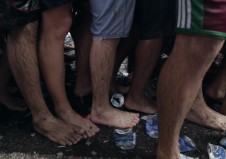
Corda, by Pablo Lobato
Corda
By Pablo Lobato, Brazil, 2014, 7 min.
Flow and disjunction, order and discord, during a Catholic procession centered around an 800-meter holy rope.

Evil Eye, by Leandro Listorti,
Evil Eye
By Leandro Listorti, Argentina, 2013, 2 min.
A short made as part of the Buenos Aires version of the workshop Labor in a Single Shot, conducted by Antje Ehmann and Harun Farocki. The workshop was intended to generate single-shot videos about labor, each 1 to 2 minutes in length, with no cuts.
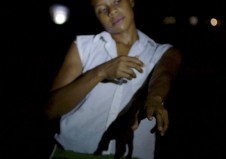
La cabeza mató a todos, by Beatriz Santiago Muñoz
La cabeza mató a todos
By Beatriz Santiago Muñoz, Puerto Rico, 2014, 8 min.
Instructions to destroy the war apparatus with a spell. The form of this spell is precise. (Beatriz Santiago Muñoz)
Nariño
By José Luis Bongore, Colombia, 2013-2014, 8 min.
This video comes from theater workshops conducted in southern Colombian conflict zones, among populations affected by fighting between guerrillas, paramilitaries, drug traffickers, and prospectors. The workshops were aimed at creating tools for self-representation. I accompanied to Nariño the team led by Cesar Castaño (playwright) and Nemesio Berrio (choreographer). (José Luis Bongore)
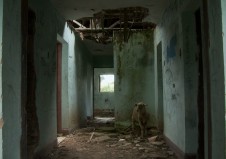
Echo Chamber, by Guillermo Moncayo
Echo Chamber
By Guillermo Moncayo, France/Colombia, 2014, 19 min.
This film is based on a very concrete reality, the gradual abandonment of Colombia’s rail network in the second half of the 20th century, reflecting the country’s complex relation to the notion of modernity over the decades. This is seen as a kind of intimate process of deconstruction of the territory’s imaginary cartography. (Guillermo Moncayo)
